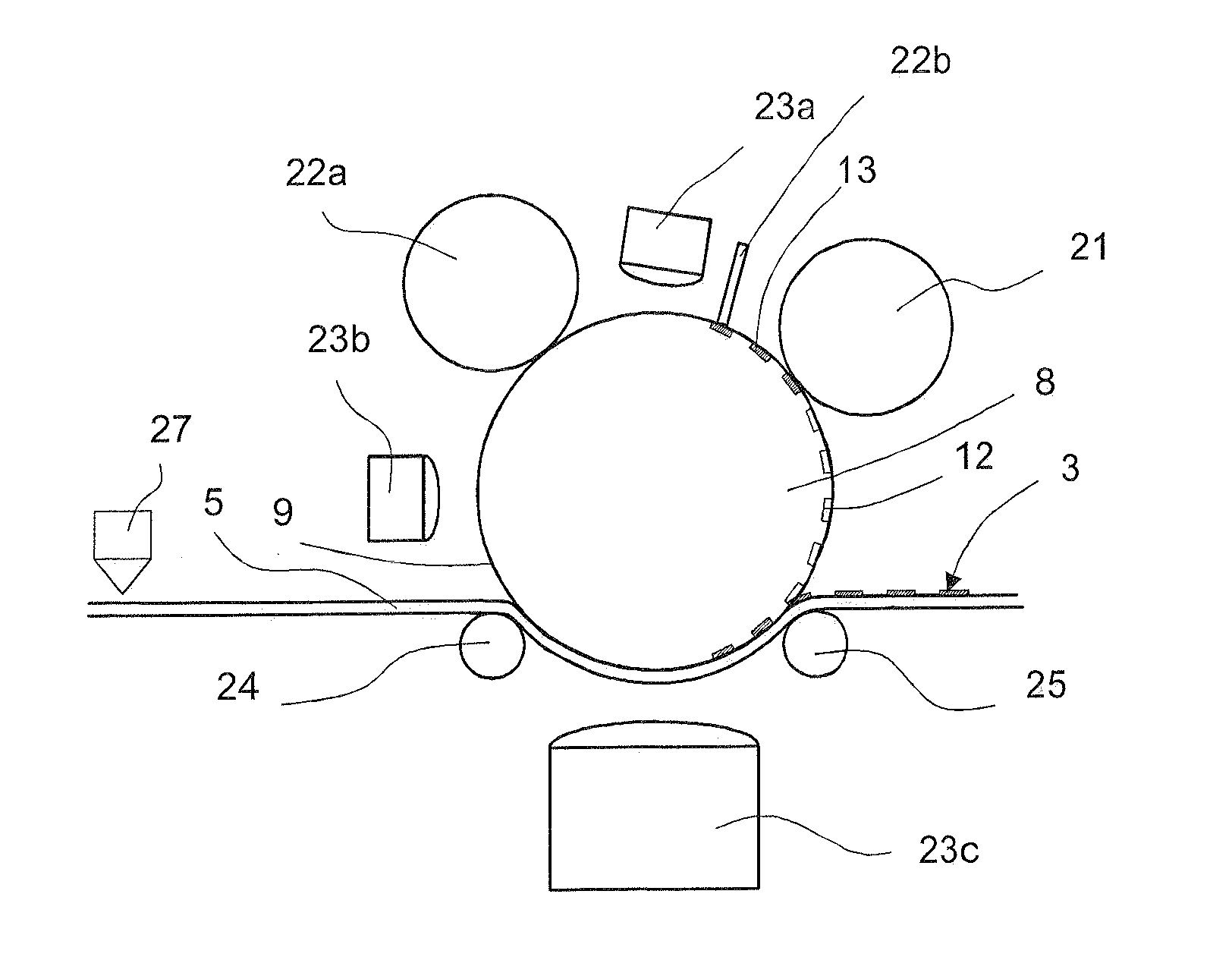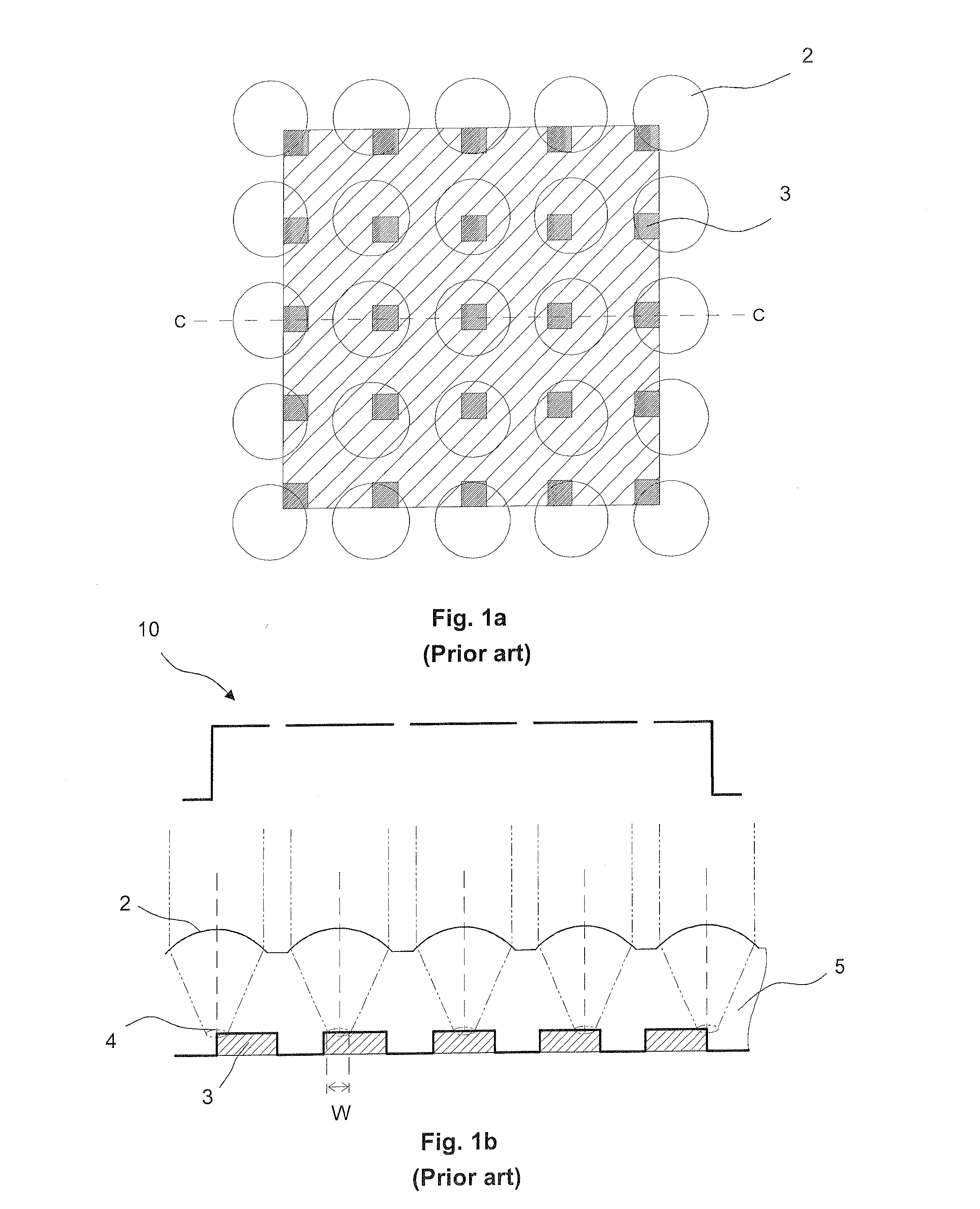Method for printing product features on a substrate sheet
a substrate sheet and product technology, applied in the field of products with printed product features, can solve the problems of insufficient filling and residual ink, affecting the perceived quality of images, and conventional printing techniques cannot readily provide the high-resolution objects necessary for synthetic image arrangement, and achieves the effect of improving dimensional tolerance and less artefacts
- Summary
- Abstract
- Description
- Claims
- Application Information
AI Technical Summary
Benefits of technology
Problems solved by technology
Method used
Image
Examples
Embodiment Construction
[0037]A product according to the invention comprises a body that in the product, or in an intermediate product, constitutes a substrate sheet with a limited thickness in relation to the extension in orthogonal directions thereof, and having product features arranged on, or in, one or both principal surfaces of the substrate sheet. By way of example, one embodiment of said product may comprise primary product features on a first side of a substrate sheet and secondary product features on the opposed side of the substrate sheet, the primary product features being associated with the secondary product features. Other embodiments of said product may comprise three or more sets of product features. In its most basic form the product comprises a substrate sheet with product features printed on only one surface thereof.
[0038]The product features can be used for different purposes, for example as structural and / or functional elements in a synthetic image device, as described above, or in ot...
PUM
 Login to View More
Login to View More Abstract
Description
Claims
Application Information
 Login to View More
Login to View More - R&D
- Intellectual Property
- Life Sciences
- Materials
- Tech Scout
- Unparalleled Data Quality
- Higher Quality Content
- 60% Fewer Hallucinations
Browse by: Latest US Patents, China's latest patents, Technical Efficacy Thesaurus, Application Domain, Technology Topic, Popular Technical Reports.
© 2025 PatSnap. All rights reserved.Legal|Privacy policy|Modern Slavery Act Transparency Statement|Sitemap|About US| Contact US: help@patsnap.com



